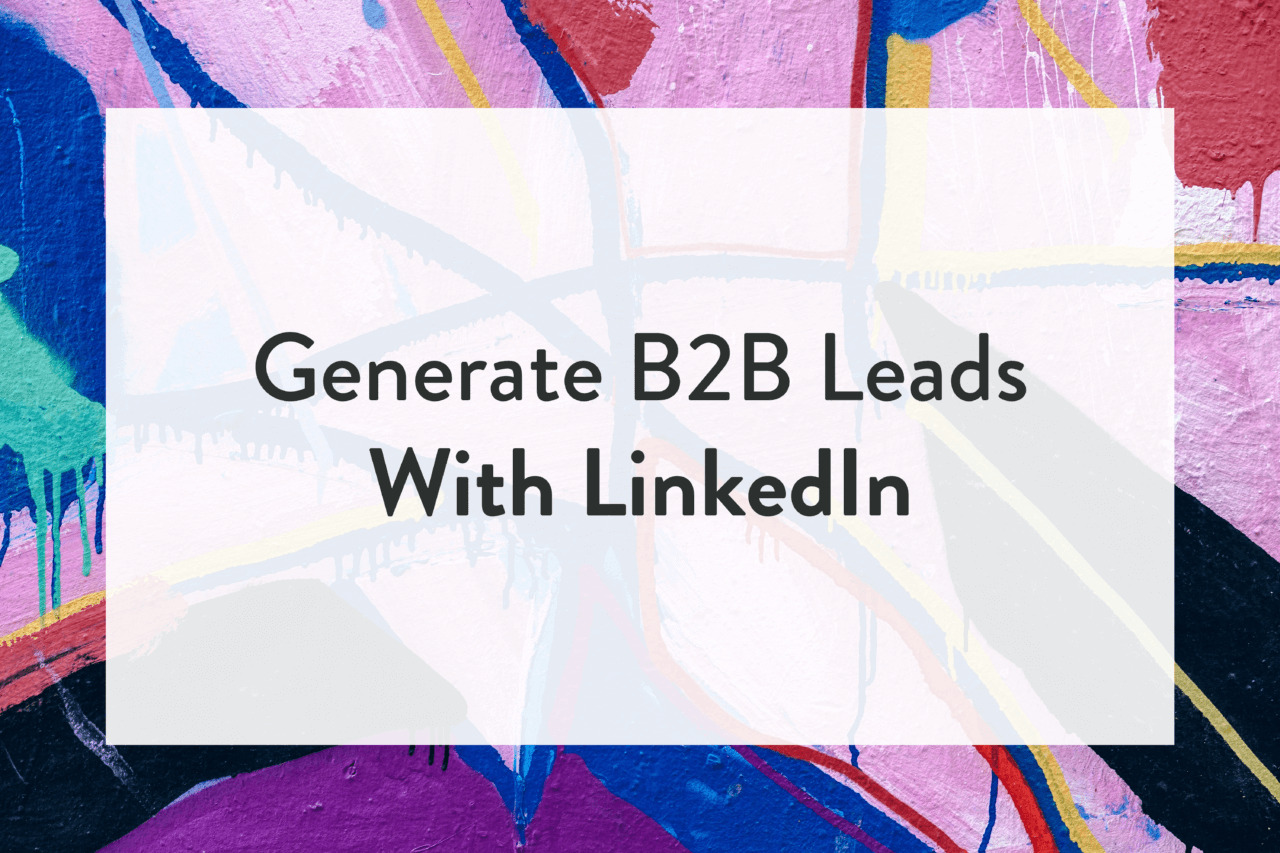
It’s been said that….
Facebook is for friends; Instagram is for celebrities and brands; Twitter is for politicians; Snapchat is for teenagers.
And LinkedIn? LinkedIn is for professionals.
More than any other social platform, LinkedIn is confined to the realm of networking—and B2B networking ranks among the most effective. Users can connect with similar professionals, exchange ideas, discover new leads, look for new jobs and find unique ways to create new partnerships.
Several case studies have proven that LinkedIn drives the highest percentage of customers to your business. The underlying reason is self-evident: the only people on LinkedIn are by nature interested in connecting with like-minded professionals. Rarely has anyone joined LinkedIn “just for fun.”
The minds at LinkedIn know this, of course, and charge a hefty several hundred dollars in annual fees for LinkedIn Premium, the service that allows you to message anyone, regardless of whether you’re actually connected to them. For our purposes, we’re going to assume you don’t have LinkedIn Premium, and stick to old-fashioned techniques that will work regardless of your investment.
Craft a Profile that Sells Yourself
If you want any success on LinkedIn, you need to dress to impress. Get a good photographer (or at least a good camera and a tripod), find a clean background, wear your finest work clothes and look confidently into the camera. Put on the same face you’d make if you were actually meeting your lead for the first time—after all, the second they first see your profile picture will basically be that moment.
Optimize your profile by tailoring your headline to include your specialty and even a CTA. Here’s a great example:

Her profile doesn’t just say “Business Trainer” or something generic, but acts as a tagline to her entire business. It’s a great move for entrepreneurs whose job descriptions may defy the confines of a simple description.
If you’re up on your industry’s SEO keywords, you can even leverage LinkedIn’s search-engine authority to boost your personal page’s search ranking. Finding an organic lead that way would be the easiest of all.
Become a Thought Leader
LinkedIn may be for professionals, but it’s still a social network. So get social! Join groups relevant to your industry (or create one—more on that soon), find questions you can answer on forums and get your voice out there. Write clearly and correctly, and always naturally include your company in your answer.
But don’t focus too much on your company. This isn’t a sales pitch; it’s basically content marketing, except you’re trading the long-term gains of SEO juice (which you’d earn by hosting on your own site as a blog post) for the immediate results of social media. (Though if you want to truly leverage your efforts, why not turn your LinkedIn post into a longer blog post for your own site?)

Be sure to include CTAs and links to your site. You can basically use LinkedIn as a blogging platform to write and expand your thoughts. If you’re not a great writer, but you have topic ideas, there’s no shame in hiring a ghostwriter to help you craft the posts themselves. The important thing is to establish yourself as a brand and connect with B2B leads in your industry.
Offer Free Tools to B2B Leads
If you’ve been in an industry any amount of time, you must have some degree of connection to most people you’re looking to pitch. But this isn’t a free license to pitch willy-nilly to anyone you can find; instead, you’ll want to find something valuable and send it to the right people.
Use LinkedIn’s exhaustive search functions to find exactly the leads you’re looking for. You can search by job title (CEO), industry (pallets) and location (Michigan) to make sure you’re targeting the right folks.
Then tailor your headline to something that resonates (e.g. “Harry Switchbuck | Marketing Guru | Ask Me About the Insider’s Guide to Pallets”) and connect with your leads by offering them something. You can add a maximum 300-word note with each connection request—use this space to mention a free guide, webinar, whitepaper or anything else they might genuinely find useful.
Create a Group of Leads, Just for Yourself
Credit to Neil Patel, who penned an enormous blog post detailing this step-by-step: instead of simply joining a pre-existing group, create your own and invite hundreds of potential leads into it.
After you’ve honed your own profile and found your target connections, you can go one step further by creating a group and blitz-inviting relevant industry professionals to it.
Call your group something like “Pallet Manufacturers of the Midwest” and begin by propagating it with relevant content you find online. Search for articles in trade or commercial publications and post them, asking how new developments might affect the industry. Ask group members what they think of new laws or regulations. Heck, you can even ask for advice.
This is more like forum moderation than anything and will take several weeks, if not months, to show results, not to mention daily monitoring. You’re building a community. But by adding a thousand potential leads, even if hundreds accept and only dozens post regularly, you’ve still found dozens of proven leads—and actually established a real connection. That makes your pitch a much smoother process and creates a platform to grow exponentially within your field.
Create LinkedIn Ads
If all else fails, just throw a bunch of money at LinkedIn and run ads. Money solves all your problems, right?



